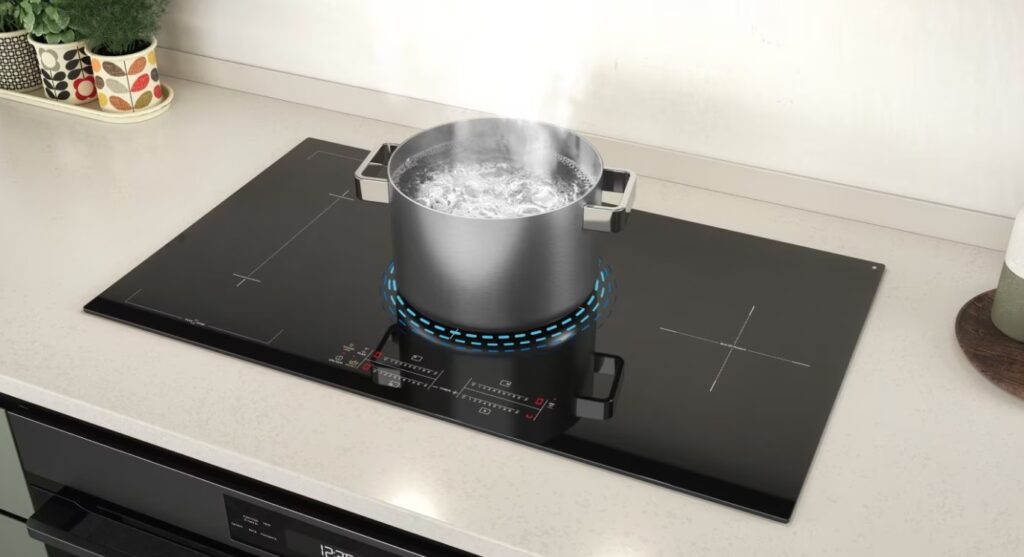In a groundbreaking announcement today, the Victorian government has declared that all new houses from January 2024 will no longer be able to use gas. This bold move, aimed at reducing greenhouse gas emissions and promoting sustainable living, has sparked a conversation about the transition from gas to electric appliances.
Given that backdrop, many planning to build new houses in the coming years, along with existing homeowners, will have plenty of questions about selecting new electric appliances.
The once cheap solution to energy, the cost of gas has significantly increased over time, something homeowners are powerless to mitigate. While the price of electricity changes as well, investing in rooftop solar can reduce household demand on the grid and as the cost of home battery storage reduces, many will also look to local storage to further reduce this cost.

Transitioning your cooktop
Electric cooktops, particularly induction cooktops, are a fantastic alternative to gas. These heat up faster, provide precise temperature control, and are safer as they don’t have an open flame.
When transitioning, it is important to consider the size of your current cooktop to ensure the new one fits perfectly. Common sizes are 600mm and 900mm (sometimes 910mm) although there are alternatives for specific scenarios.
When my wife and I built our house around 7 years ago, we installed a 900 mm-wide gas cooktop with 5 burners. While it has served us well, allowing plenty of room to cook multiple items at once, inevitably you spill food when cooking and like most, have found the cleaning process to be lengthy and annoying.
Electric cooktops offer multiple benefits, chief among them moving to zero emissions,
You’ll also need to hire a licensed electrician to handle the installation and ensure your home’s electrical system can handle the new appliance and get the gas capped safely.
Once you’ve decided to go electric, there are plenty of decisions you’ll need to make.
Brand
There are plenty of brands that offer electric cooktops in Australia, each with a lineup of products. Some of the name brands in this space are:
- Blanco
- Bosch
- Chef
- Electrolux
- Fisher & Paykel
- Miele
- Smeg
- Westinghouse
Often we look to stay on-brand when selecting appliances, with people often finding their way to favourite brands, however, there’s really no technical reason why this needs to be the case with the cooktop.
These are not really connected to smart home products like vacuum cleaners, washing machines and coffee makers. Design, price and features should form much more of your decision-making process than the brand.
Design
Cooktops come in different colours and designs and the layout of the heated areas, along with the controls also vary between designs.
Some electric cooktops offer 4 zones, while others offer 5. Personally, we’ll be looking for one with 5 to replicate the cooking options we have today, however, it is worth thinking through how many items you’ll be simultaneously cooking, most of the time this would be 2 or 3 at most.
Like our phones, most electric cooktops are a sexy slab of black glass, often contrasted by lighter stone benchtops, which can turn an appliance into a design feature.
Features
Cooktops offer a surprising range of features including boil protection, flex zone, cooking timers, power boost, pause function and Touch controls.
These vary between brands and can be a key differentiator for your purchase.
If you have kids at home, then safety around hot cooking devices is always a concern. Gas cooktops typically remain hot, long after the pots and pans have been removed and have no indication to young ones that a danger is present.
Electric cooktops have a unique property that allows them to be cool to the touch just seconds after being turned off.
Price
The price of electric induction cooktops varies wildly between brands and models. You can get them as cheap as A$1,000 for a Westinghouse WHC942BC, or pay as much as A$11,699 for a Miele KM 7999.
Given there are installation costs for an electrician and plumber are also required, it’s likely you’ll be looking at somewhere between $2-3,000 to switch from gas to the electric system. This is a great example of why it’s far better and cost-effective to go electric from the time the house is built.
Installing a cooktop during a house build would be one of a number of tasks that trade is providing when working on a new house, rather than being called out for an individual task.
You should also consider the cost to replace your pots and pans with ones that are compatible with an induction cooktop. While that may be annoying if you have a large collection, these often last multiple years.
This will be part of a multi-post series, with the following posts focusing on other gas-to-electric appliance conversions including hot water systems, heating and HVAC.
The Future is Electric
The Victorian government’s mandate is a significant step towards a more sustainable future. Transitioning from gas to electric appliances may seem daunting, but with careful planning and professional help, it can be a smooth process. Remember, the shift to electric is not just about compliance with new regulations; it’s about embracing a more sustainable lifestyle and contributing to a greener future.
